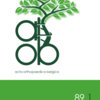A retrospective analysis of nonresponse to denosumab after hip fractures
Osteoporosis, denosumab, hip, fractures
Published online: Jun 08 2023
Abstract
Denosumab is an effective antiresorptive drug commonly prescribed for the treatment of osteoporosis. However, some patients do not respond well to denosumab treatment. The aim of this study was to evaluate the factors underlying treatment nonresponses to denosumab in elderly patients following hip fracture. This retrospective study included 130 patients treated with denosumab after osteoporotic hip fracture between March 2017 and March 2020. The patients were categorized as denosumab nonresponders if they had a T-score <−3 that persisted between dual-energy X-ray absorptiometry scans, a >3% decrease in bone mineral density (BMD), or an incident fracture on denosumab therapy. We examined the baseline characteristics associated with blunted BMD responses and compared the groups following denosumab treatment for 12 months. Of 130 patients with baseline data, 105 patients (80.8%) were considered responders. No difference in baseline vitamin D, calcium, BMI, age, gender, prior fracture history, or bisphosphonate use was observed between responders and nonresponders. A longer interval between denosumab injections was associated with suboptimal BMD response at both spine and total hip (p<0.001 and p=0.04, respectively). The overall L-BMD and H-BMD were significantly increased compared with pretreatment levels after denosumab treatment (5.7% and 2.5%, respectively). This study revealed that nonresponse was not strongly associated with certain baseline variables and it appears that the reponders and nonresponders were reasonably comparable in this study population. The results of our study highlight the importance of timely denosumab administration when using this drug for osteoporosis management. Physicians should keep these results in mind in clinical practice so that they can improve utilization of 6-month denosumab.
